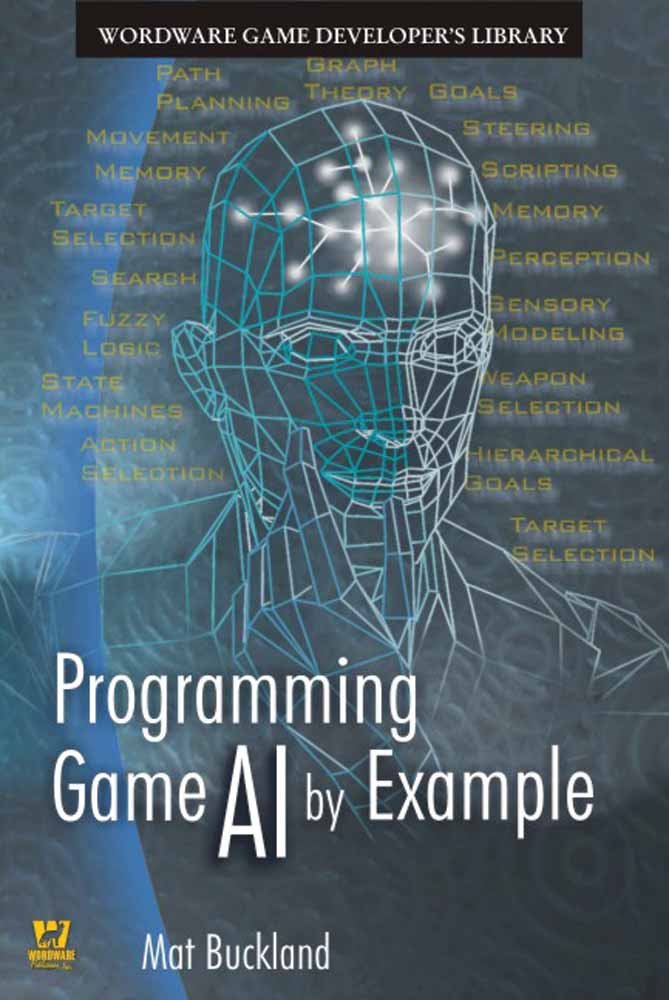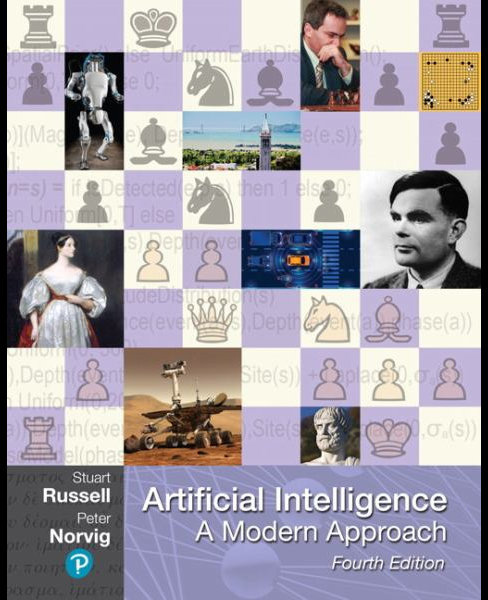FIT CTU
Adam Vesecký
vesecky.adam@gmail.com
Lecture 10
Game AI
Architecture of Computer Games
AI introduction
Game AI
Artificial Intelligence in Games
- a broad set of principles that generate behaviors, providing an illusion of intelligence
- should be sophisticated enough to make the players think they interact with something intelligent
- even though it’s interesting when AI does unpredictable things, it’s not necessarily fun for players
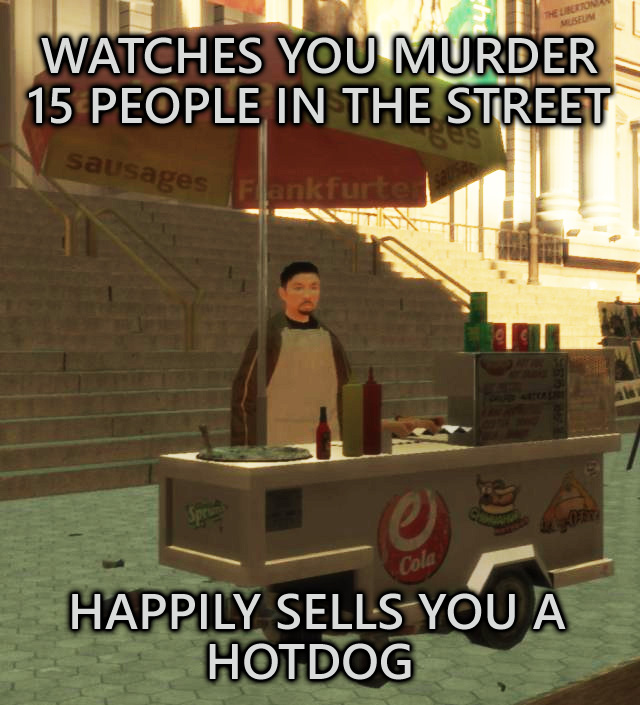
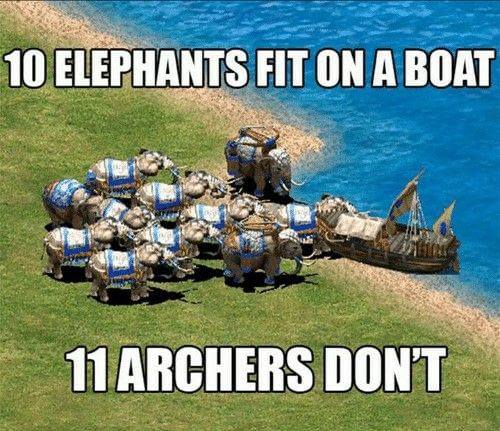
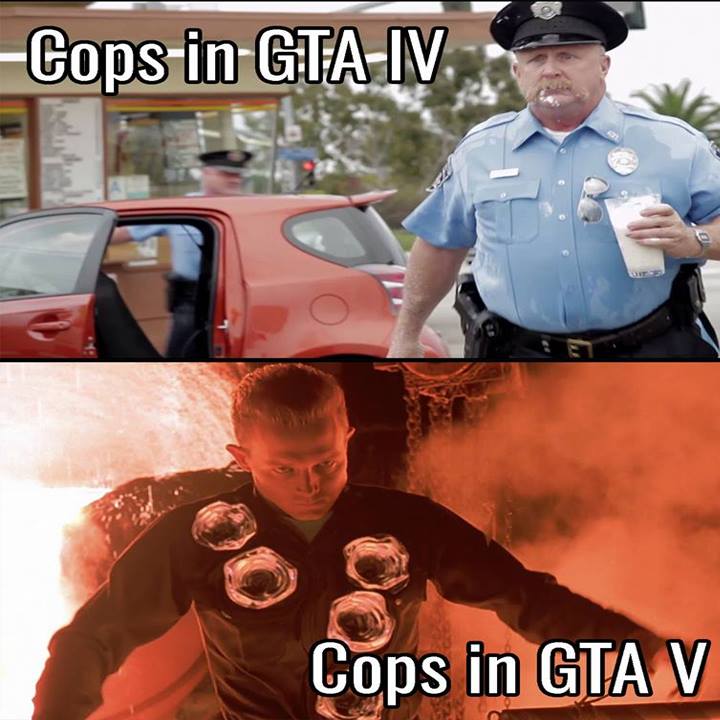
AI Techniques
AI Techniques
AI in games
Doom 1 (1993)
- monsters infighting (two AI characters encounter each other)
- state machines, intelligent map (SPECIAL attribute of map lines)
Age of Empires (1997)
- AI is smart enough to find and revisit other kingdoms, poor in self-defense
Half-life (1998)
- monsters can hear and track players, flee when getting defeated etc.
- soldiers had automated announcement system, ability to cover
Starcraft (1998)
- particle model for hidden units' position estimation
Unreal Tournament (1999)
- Bayesian networks
Quake III (1999)
- HFSM for decisions, AAS (Area Awareness System) for collisions and pathfinding
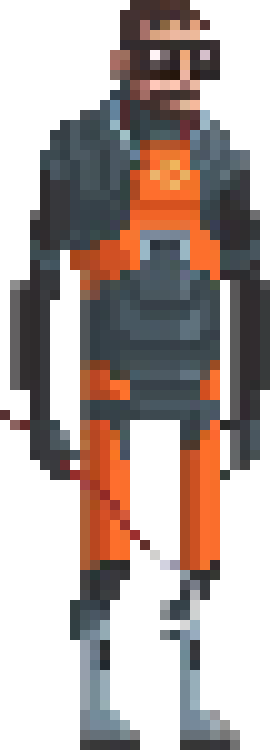
AI techniques in games
Halo 2 (2004)
- behavior trees and fuzzy logic
F.E.A.R. (2005)
- GOAP for tactical coordinating with squad members, suppression fire, blind fire
XCOM: Enemy Unknown (2012)
- utility-based system, measuring usefulness for every possible action
ARMA 3 (2013)
- efficient issue ordering, situation-based decisions, retreats, ambush
- HTN (Hierarchical task network) for mission generator
The Last Of Us (2013)
- Ellie - companion AI
DOTA 2 (2013)
- OpenAI bot (since 2017) has beaten some of the greatest players
Starcraft II (2013)
- AlphaStar deep neural network, released in 2019
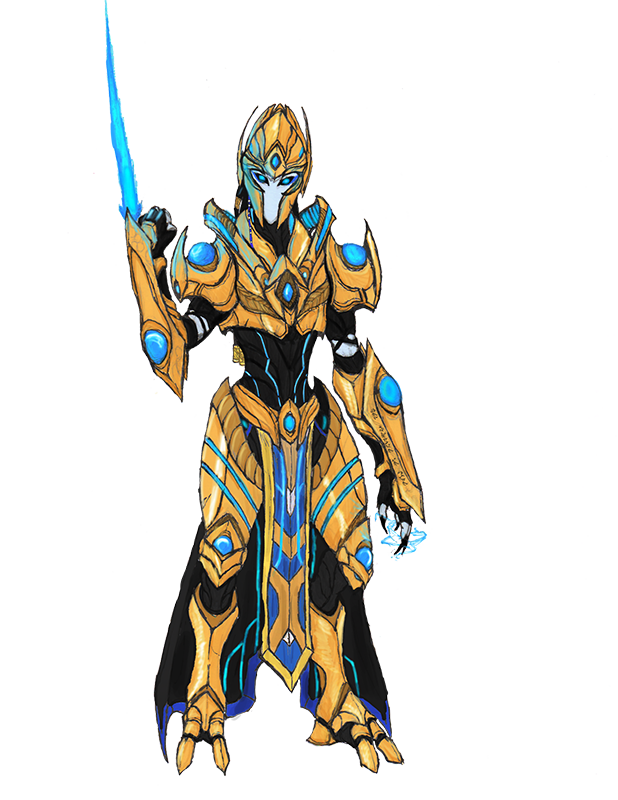
Challenges for Game AI
Game AI features and limits
- real-time
- limited resources
- incomplete knowledge
- planning
- learning
Game AI properties
- predictability and unpredictability (surprise elements)
- support - communication between NPC and the player
- surprise - harassment, ambush, team support,...
- winning well and losing well
- cheating - acceptable as long as it doesn't get detected by the player
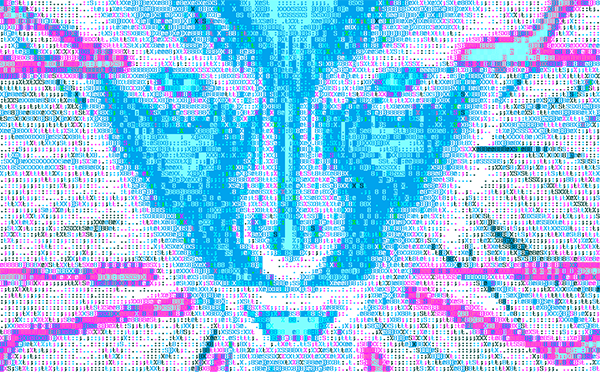
AI for mobs
Scripting
- IF-THIS-THEN-THAT
- AI behavior is completely hardcoded
- simple, easy to debug, easy to extend
- human player should behave as the developers expected
- good scripting behavior must cover a large amount of situations
| 1 | // Doom 2: find player to chase |
| 2 | void A_Look (mobj_t* actor) { |
| 3 | mobj_t* targ; |
| 4 | actor->threshold = 0; // any shot will wake up |
| 5 | targ = actor->subsector->sector->soundtarget; |
| 6 | if (actor->flags & MF_AMBUSH){ |
| 7 | if (P_CheckSight (actor, actor->target)) |
| 8 | goto seeyou; |
| 9 | } else goto seeyou; |
| 10 | |
| 11 | if (!P_LookForPlayers (actor, false)) return; |
| 12 | // go into chase state |
| 13 | seeyou: |
| 14 | P_ChasePlayer(); |
| 15 | } |
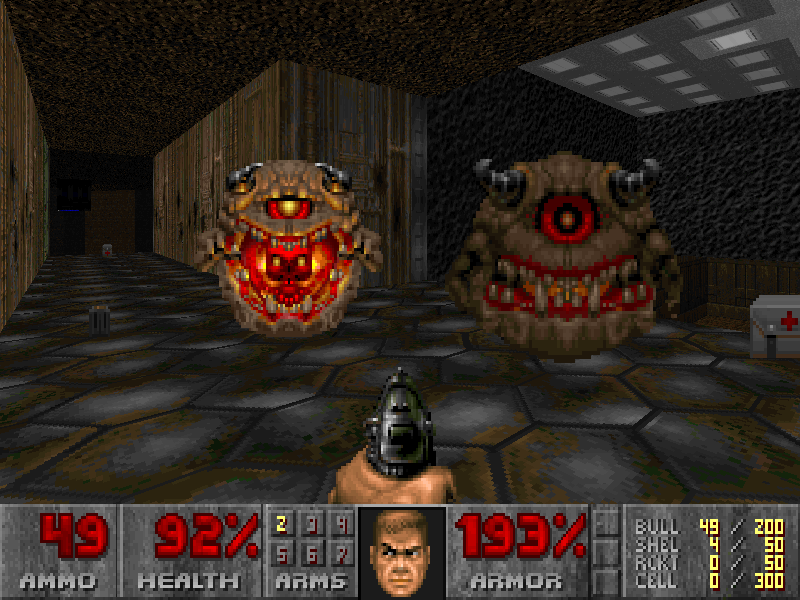
Finite State Machine
- the oldest and most commonly used formalism to model game AIs
- useful for entities with a small set of distinct states
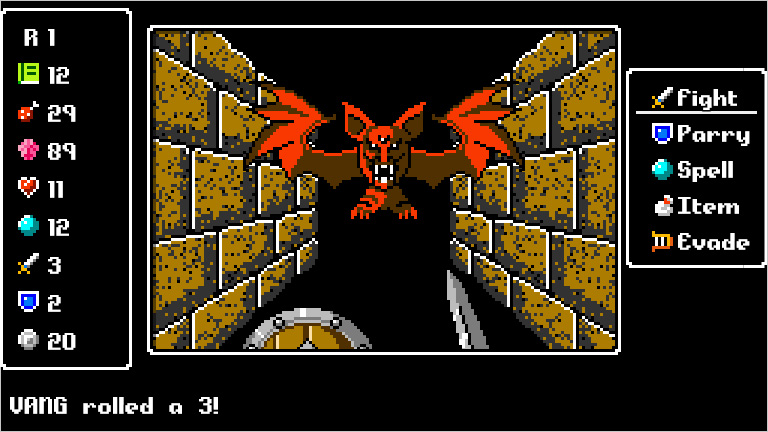
- each entity can be in exactly one of a finite number of states at any time
- Definition
- quadruple:
- is a finite, non-empty set of states
- is a finite set of inputs
- is the state-transition function
- is an initial state,
- can be implemented via polymorphism or a state transition table
- unmanageable for large complex systems, leading to transition explosion
Example: Pacman FSM
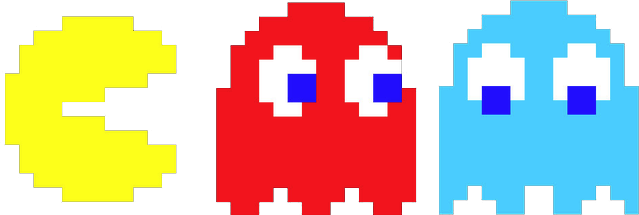
Example: Pacman transition table
| State | Transition | Condition |
|---|---|---|
| Wander the maze | Chase pacman | Pacman spotted |
| Wander the maze | Flee Pacman | PowerPellet eaten |
| Chase Pacman | Wander the maze | Pacman lost |
| Chase Pacman | Flee Pacman | PowerPellet eaten |
| Flee Pacman | Return to Base | Eaten by Pacman |
| Flee Pacman | Wander the maze | PowerPellet expired |
| Return to Base | Wander the maze | Central base reached |
Example: Doomguard
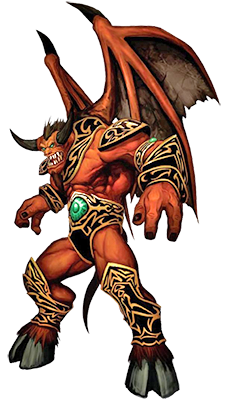
Example: Doomguard
- let's add an ability to fall asleep

Hierarchical state machine
- also known as statecharts
- each state can have a superstate or a set of substates
- groups of states share transitions
- usually implemented as a stack
- push a low-level state on the stack when entered
- pop and move to the next state when finished

Fuzzy logic
- a complementary asset for state machines and scripting
- instead of thresholding, we can blurry out state transitions
- used in Halo 3 for unit control, threat assessment and classification
Behavior Tree
- tree of hierarchical nodes that control decision making process
- originated from gaming industry since Halo 2 (2004)
- combines elements from both Scripting and HFSMs
- there is no standardized formalization
- depth-first traversal, starting with the root node
- each executed behavior passes back and returns a status
- SUCCESS, FAILURE, RUNNING, (SUSPENDED)
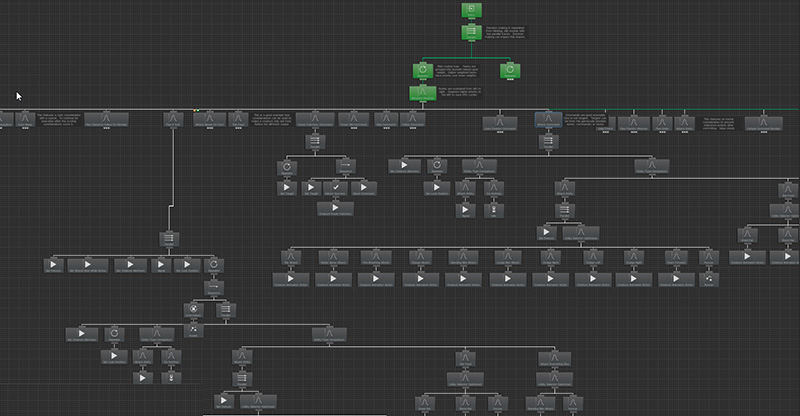
Behavior Tree
| Node Type | Success | Failure | Running |
|---|---|---|---|
| Selector | If one child succeeds | If all children fail | If one child is running |
| Sequence | If all children succeed | If one child fails | If one child is running |
| Decorator | It depends | It depends | It depends |
| Parallel | If N children succeed | If M-N children succeed | If all children are running |
| Action | When completed | Upon an error | During completion |
| Condition | If true | If false | Never |
Behavior Tree - Node Types
Selector
- tries to execute its child nodes from left to right until it receives a successful response
- when a successful response is received, responds with a success
Sequence
- will execute each of its child nodes in a sequence from left to right until a failure is received
- if every child node responds with a success, the sequence node itself will respond with a success
Decorator
- allows for additional behavior to be added without modifying the code
- only one child node
- returns success if the specified condition is met, and its subtree has been executed successfully
- Example: Repeater, Invertor, Succeeder, Failer, UntilFail, UntilSucceed
Behavior Tree - Node Types
Parallel node
- a node that concurrently executes all of its children
Condition
- a node that will observe the state of the game environment and respond with either a success or a failure based on the observation, condition etc.
- Instant Check condition - the check is run once
- Monitoring condition - keeps checking a condition over time
Action
- a node used to interact with the game environment
- may represent an atomic action, a script or even another BT
Blackboard
- a construct that stores whatever information is written to it
- any node inside or outside the tree has an access to the blackboard
Example: Unreal Engine BT Editor
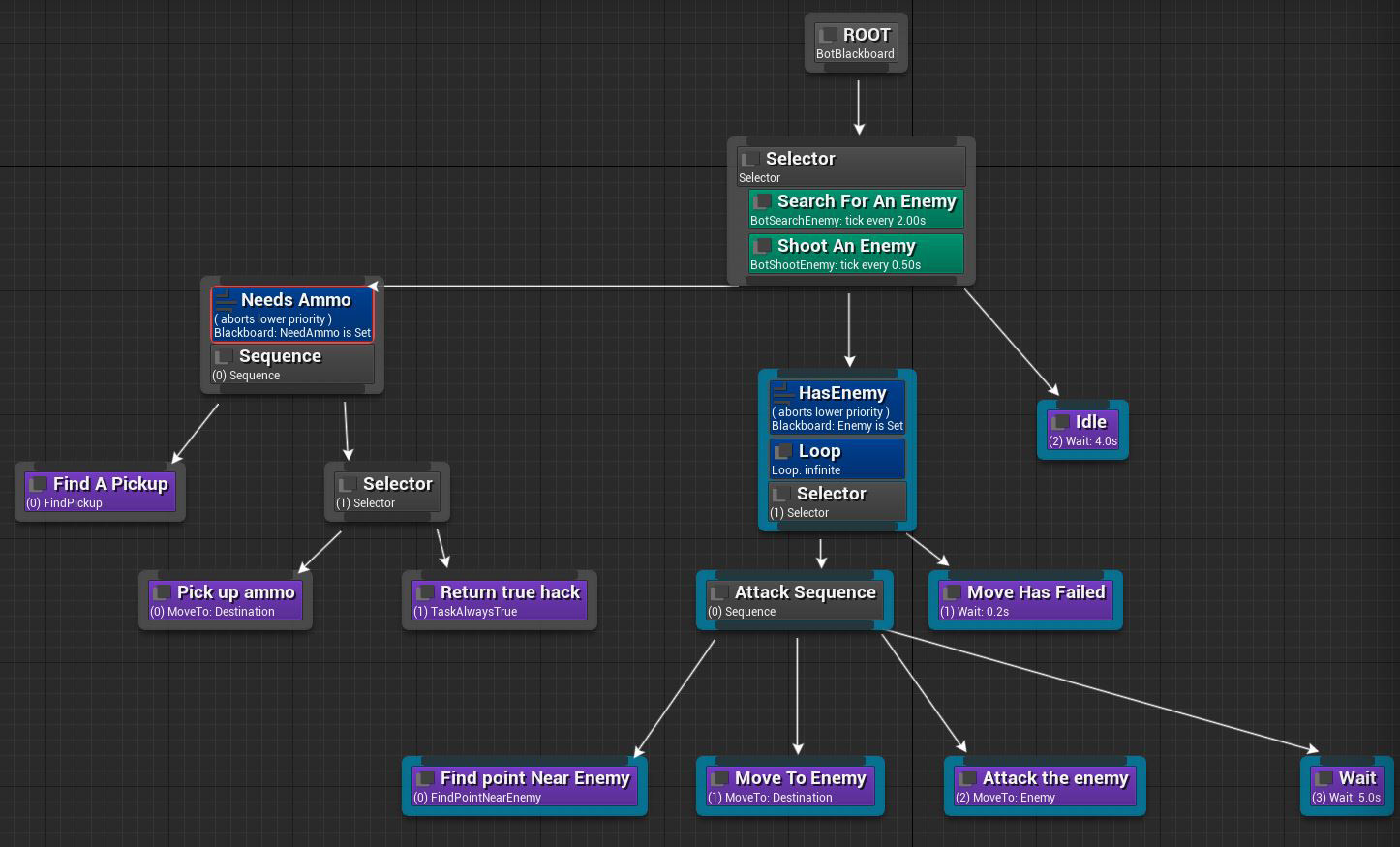
Example: Doomguard
BT Improvements
- we can define a conditional selector in order to simplify the diagram
Example: Locked door
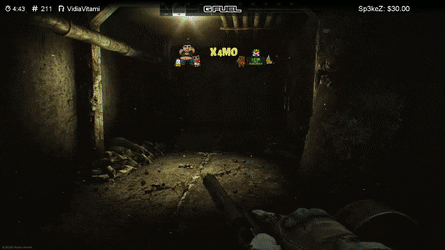
Goal-Oriented Action Planning
- centers on the idea of goals as desirable world states -> select a goal and attempt to fulfill it
- each action has a set of conditions it can satisfy, as well as a set of preconditions that must be true in order to be satisfied
- implemented for F.E.A.R (2005) and Tomb Raider (2013)
Example: F.E.A.R.
- Advanced AI behavior: blind fire, dive through windows, take cover,...
- key idea: to determine when to switch and what parameters to set
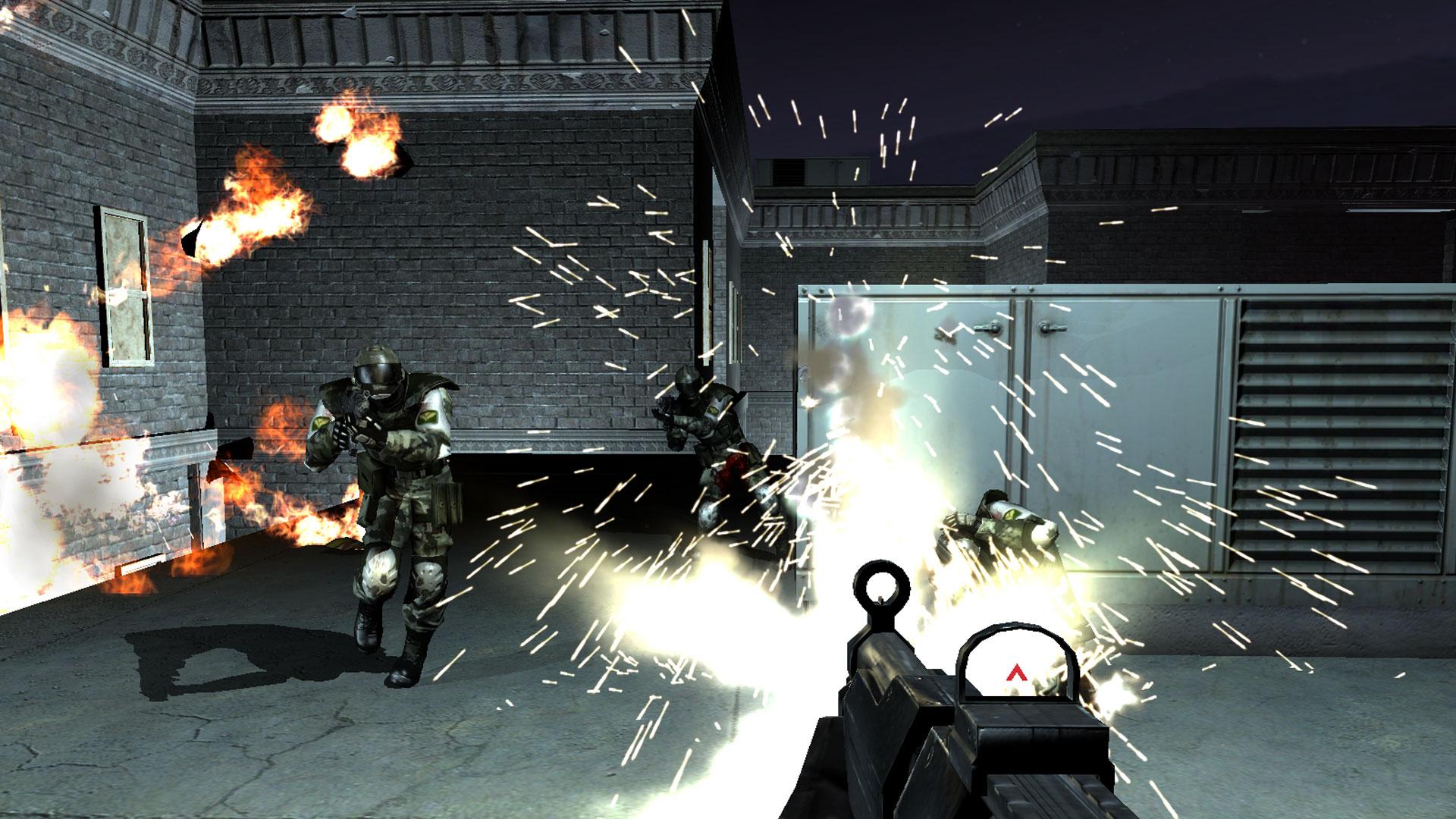
Example: F.E.A.R
- a set of goals is assigned to each mob
- these goals compete for activation, and the AI uses a planner to try to satisfy the highest priority goal
- the AI figures out the dependencies at run-time, based on the goal state and effects of actions
| Soldier | Assassin | Rat |
|---|---|---|
| Attack | Attack | Animate |
| AttackCrouch | InspectDisturbance | Idle |
| SuppressionFire | LookAtDisturbance | GotoNode |
| FlushOutWithGrenade | AttackMeleeUncloaked | |
| AttackFromCover | TraverseBlockedDoor | |
| BlindFireFromCover | AttackFromAmbush | |
| ReloadCovered | AttackLungeUncloaked |
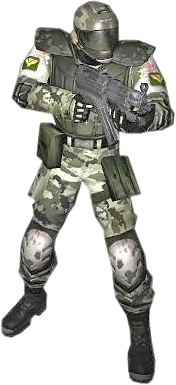
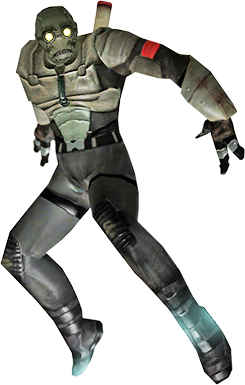
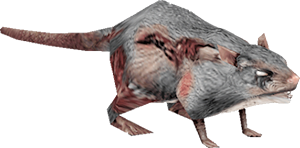
AI for navigation
Predicting opponents
- cheating bots are not fun in general
- bots shouldn't know where the player is
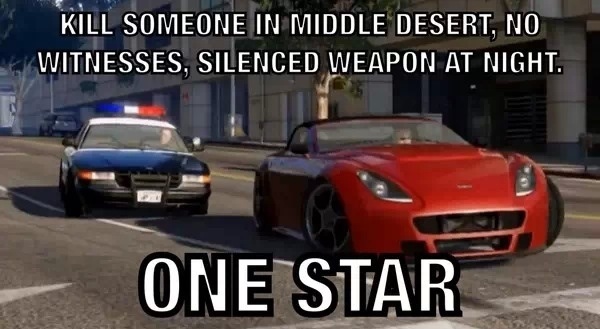
Partial observations of the game state
- AI is informed in the same way as the human player
- the mistakes these models make are more human-like
- Filtering problem - estimating the internal states based on partial observations
- General methods:
- Hidden semi-markov model
- Particle filters
- Methods for FPS:
- Occupancy map
- SOAR cognitive architecture (used in Quake II)
- Vision Cone (used in Bioshock)
- Methods for strategies:
- Threat map
- Influence map
- Bayesian networks
Occupancy map
- a grid over the game environment
- maintains probability for each grid cell
- probability represents the likelihood of an opponent presence
- when the opponent is not visible, the probabilities from the previous occupancy cells are propagated along the edges to neighboring cells
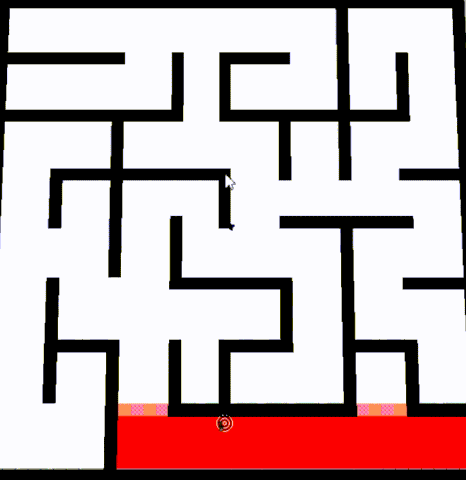
Threat map
- the value at any coordinate is the damage the enemy nearby can inflict
- can be easily integrated into pathfinding
- Example: combat units bypass enemy defensive structure in order to attack their infrastructure
Example: OpenTTD
- business simulator, derived from Transport Tycoon Deluxe
- many challenges for AI
- management over particular transport types
- financial issues handling (loan control)
- maintenance and vehicle replacement
- acceleration model
- upgrades, road extending
- pathfinding, partial reusability of existing roads
- vehicle utilization, failures, traffic
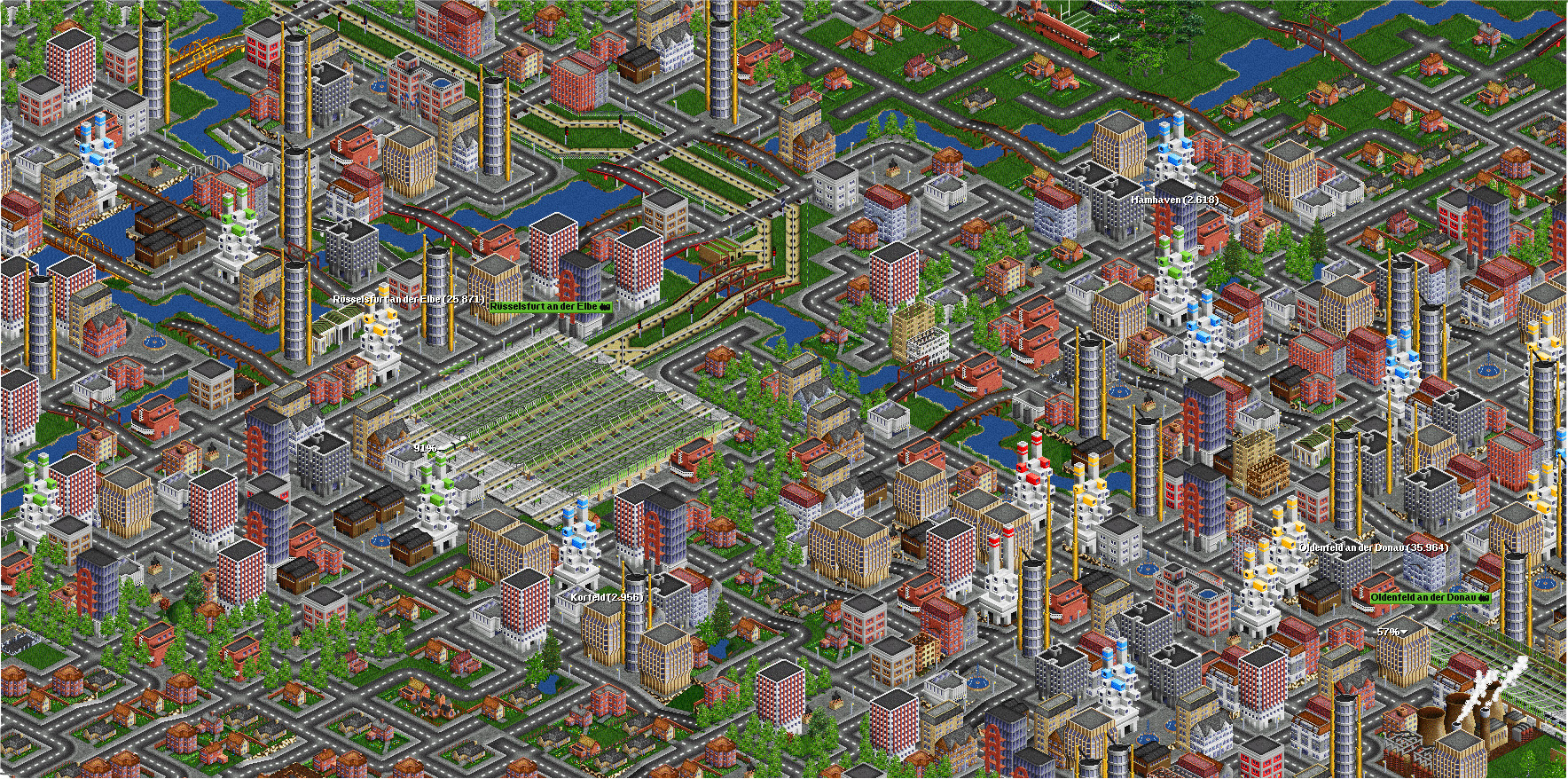
OpenTTD AI
PathZilla AI
- advanced graph theory
- Delaunay Triangulation
- roads based on minimum spanning tree
- queue of planned actions
trAIns
- most scientific approach, evolved from a research project in 2008
- double railways support
- concentration on production
AdmiralAI
- attempt to implement as many features from game API as possible
- the oldest and most comprehensive AI for OpenTTD
NoCAB
- very fast network development and company value grow
- custom A* implementation designed for speed
- can upgrade vehicles
Example: Pathzilla Road Analysis
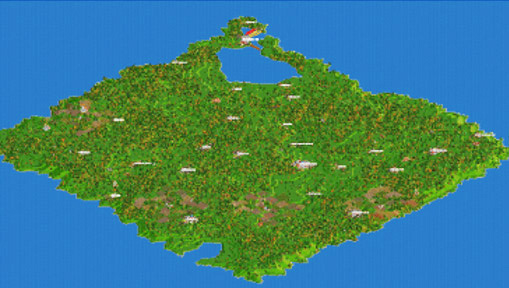
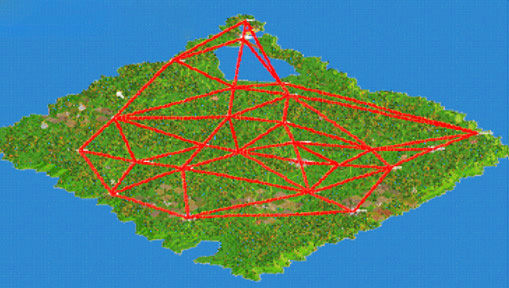
Triangulation
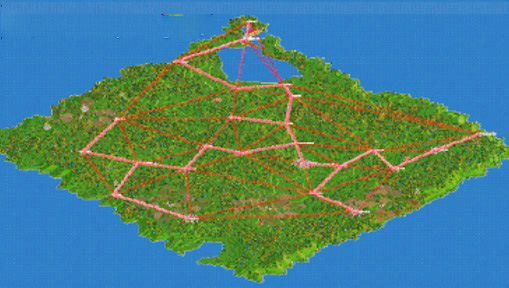
Min spanning tree
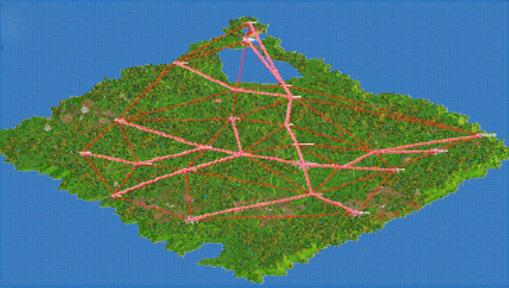
Shortest path tree
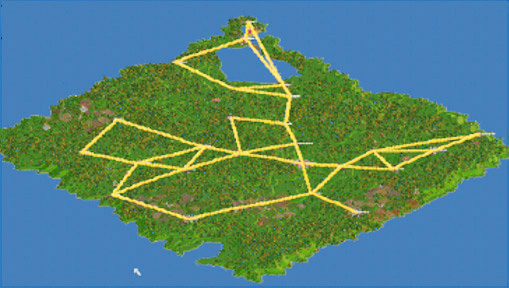
Planning graph
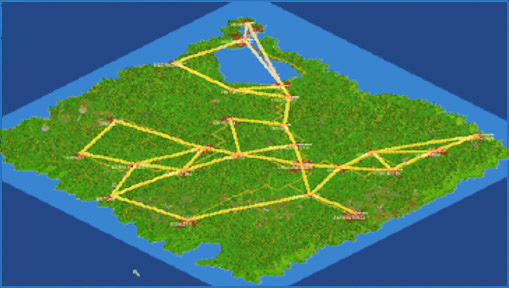
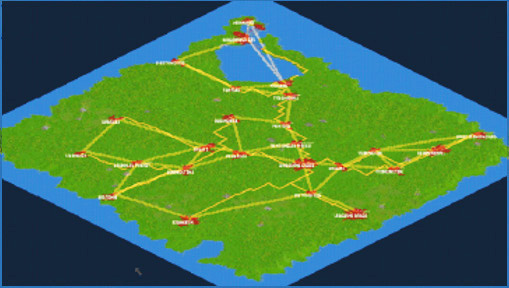
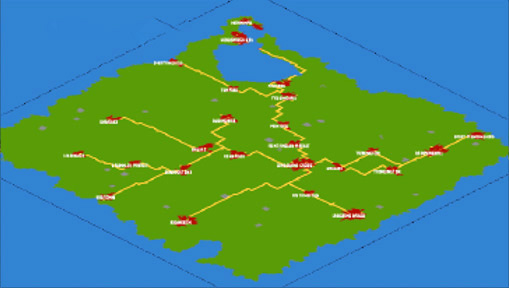
Final road network
Real AI in games
Terms
Planning
- a formalized process of searching for sequence of actions to satisfy a goal
Supervised learning
- works just like learning at schools
- for certain input, there is a correct output the algorithm has to learn
Unsupervised learning
- the output cannot be categorized as being either correct or false
- the algorithm learns patterns instead
Reinforcement learning
- an agent must learn the best possible output by using trial and error
- for each action chosen the agent obtains a feedback
Reinforcement learning
- learning what to do and how to map states to action to maximize a reward
- based on its action, the agent gets a reward or punishment - these rewards are used to learn
- Reward - informs the agent to which outcome the selected action leads
- Exploration - probing new regions of the search space to find new promising solutions
- Exploitation - probing promising region of the search space to improve current solution
Algorithms
- Genetic Evolution
- Q-Learning
- SARSA
- Monte-Carlo simulation
Models
- Decision trees
- Bayesian networks
- Neural networks
Monte-Carlo tree search
Artificial neural network
- computational model that attempts to simulate a biological neural network
- network of nodes are connected by links that have numeric weights attached
- backpropagation - measure of divergence between the observed and the desired output
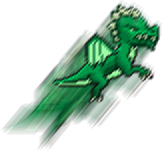



Neural Network Applications
MarI/O
- NEAT - genetic algorithm for evolving neural networks (LINK)
- Input: simplified game screen (13x13) blocks
- Output: pressed button (6 neurons)
- Max neurons: 1 000 000
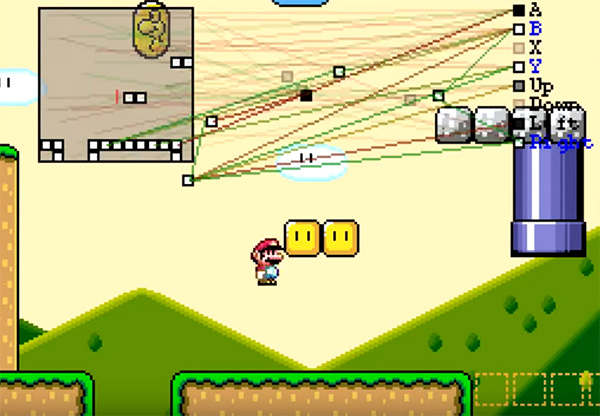
DeepMind 2014
- neural network that can play Atari games (uses Q-learning)
- Inputs: 210x160 at 60Hz, terminal signal and game score

Case-based reasoning
Main idea
- when making decisions, we remember previous experiences and then apply solutions that worked in previous situations
- if a certain situation hasn't been encountered yet, we recall similar experience and adjust the solution to fit the current situation
Steps
- Retrieve - get the cases which are relevant to the given problem
- Reuse - create a preliminary solution from selected cases
- Revise - adapt the preliminary solution to fit the current situation
- Retain - save the case into the knowledge base
Example: Defcon
- multiplayer real-time strategy game
- players compete in a nuclear war to score points by hitting opponent cities
- stages: placing resources, fleet maneuvres, fighter attacks, final missile strikes
- AI: decision tree learning and case-based reasoning
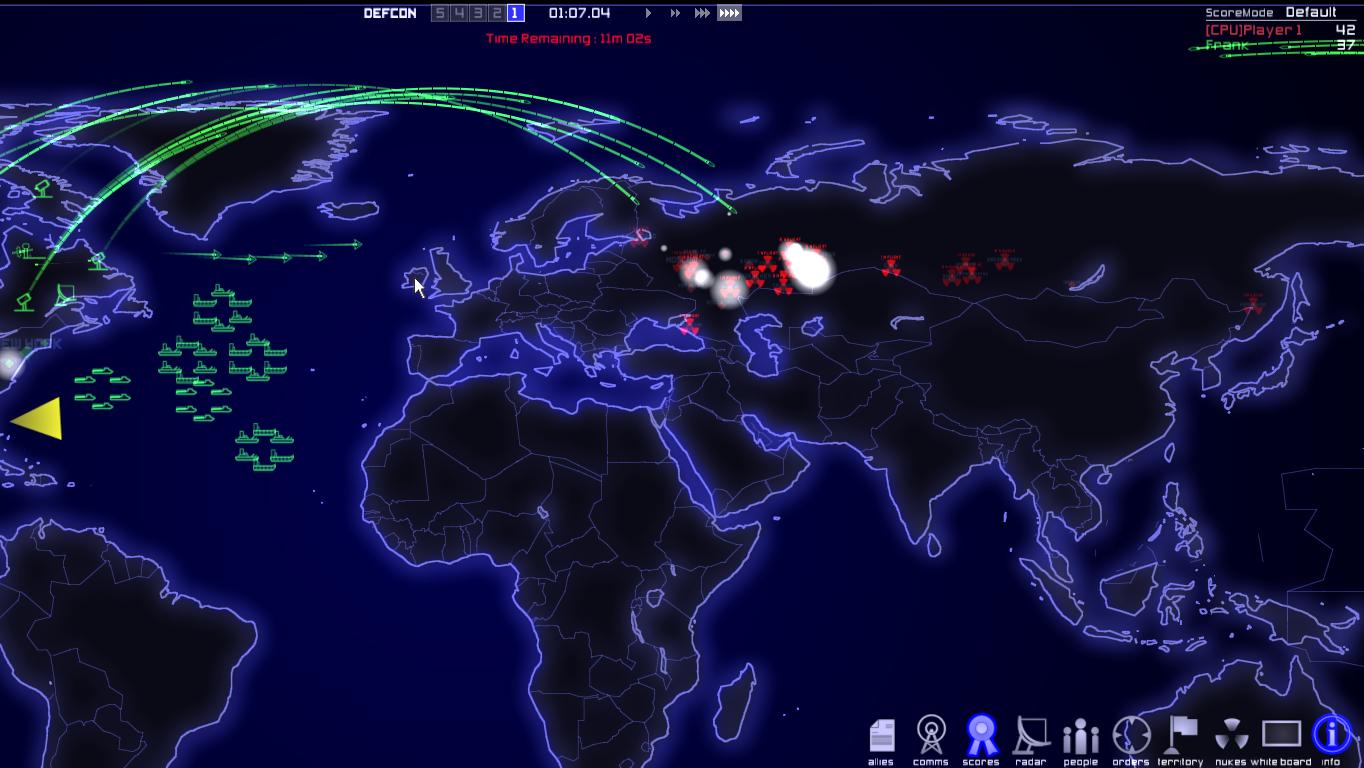
Defcon: Case structure
- starting positions of units and buildings
- metafleet movement and attack plan
- performance statistics for deployed resources
- abstraction of the opponent attacks (time-framed clustering)
- routes taken by opponent fleets
- final scores of the two players
AI in strategies
Real-time strategy
- Real-time strategy is a Bayesian, zero-sum game (Rubinstein, 1994)
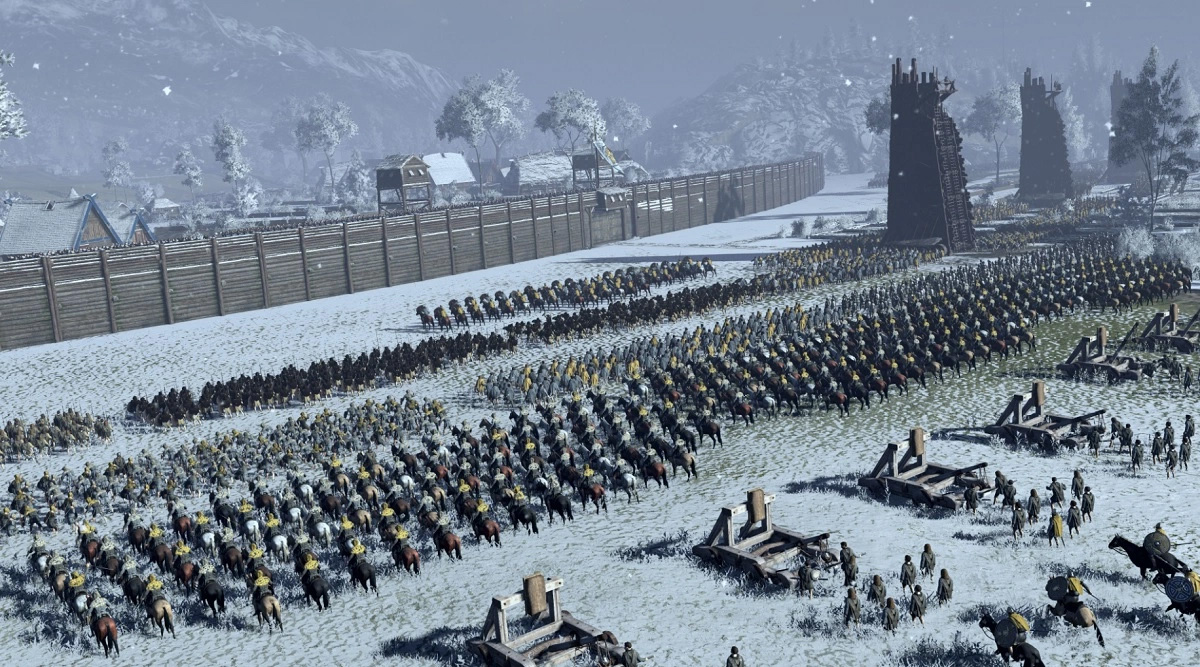
- a game where the player is in control of certain, usually military, assets, with which the player can manipulate in order to achieve victory
- goal: build up a base, gather resources, produce army, destroy the enemy
- methods: layer-based AI, rule-based AI
Main elements
- map, mini-map
- resources
- units and their attributes
- buildings
Other features
- real-time aspect (no turns)
- fog of war
- tech tree
RTS games

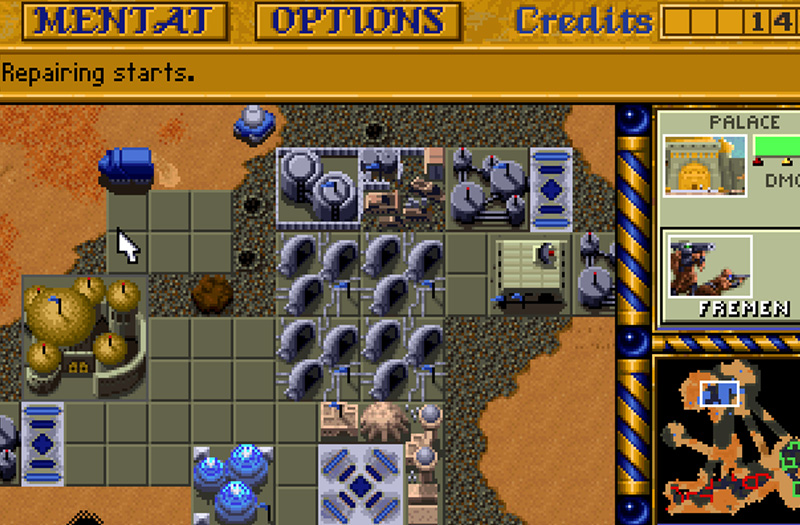

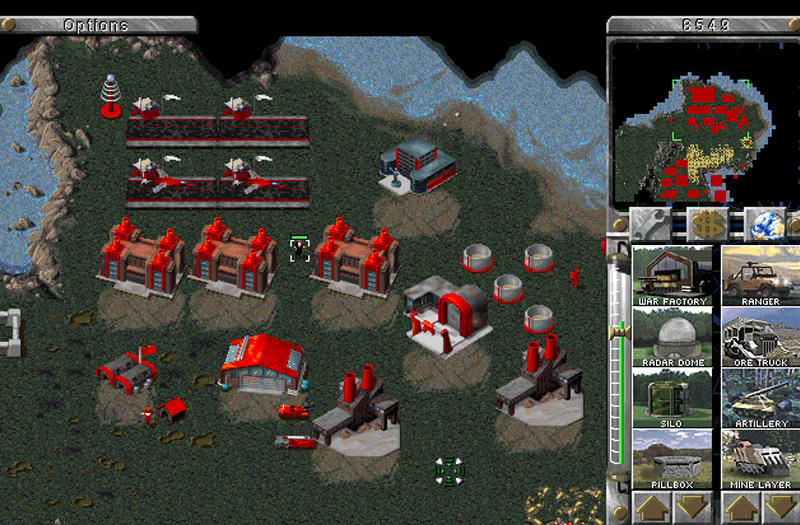

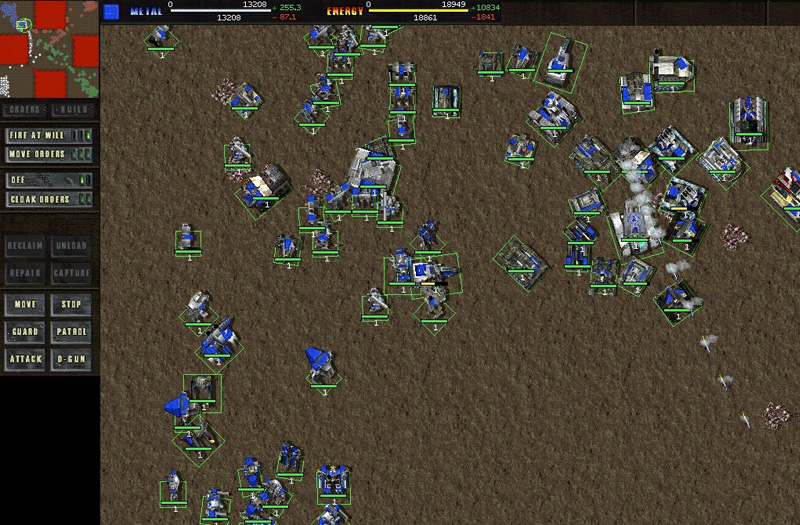



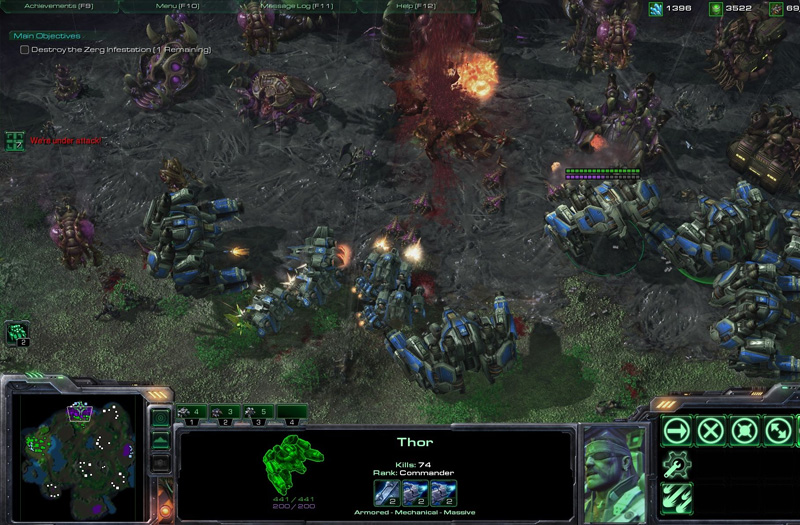

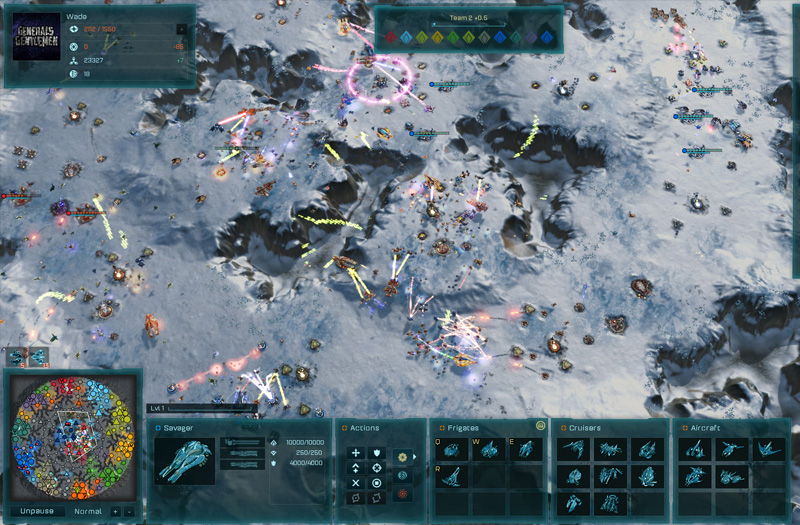
RTS Features
Resource Control
- minerals, gas, oil, trees,...
- controlling more resources increases the players' constsruction capabilities
Tech tree
- a directed acyclic graph that contains the whole technological development of a faction
Build order (opening)
- the timing at which the first buildings are constructed

Fog of war
- fog that covers the parts of the map the player has not yet explored
- requires to scout unexplored areas to find enemy sources
Micromanagement
- way of controlling units in detail while they are in combat
Tactics
- a set of specific actions used when applying a strategy
Strategy
- making decisions knowing what we saw from the opponent
Example: Starcraft 2 Tech-tree
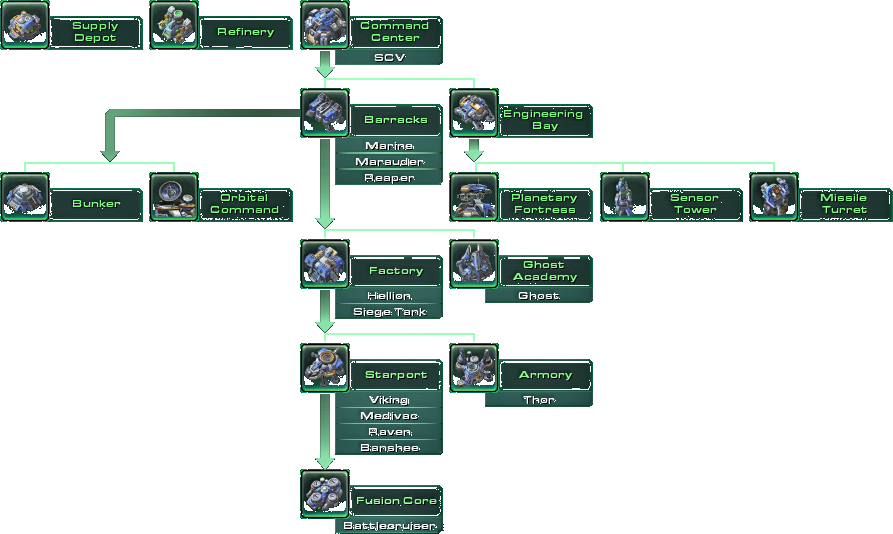
RTS AI Layers
- micromanagement
- tactics (army positions)
- strategy (tech tree)
Layer-based AI
- each layer handles specific task
- decision components consider available information, retrieved by lower components, to make decisions; executors are triggered afterwards
- Sensor - reads the game state
- Analyzer - combines sensing data to form a coherent picture
- Memorizer - stores various types of data (terrain analysis, past decisions,...)
- Decider - a strategic decider, determines goals
- Executor - translates goals into actions
- Coordinator - synchronizes groups of units
- Actuator - executes actions by modifying the game state
Example: Layer-based AI
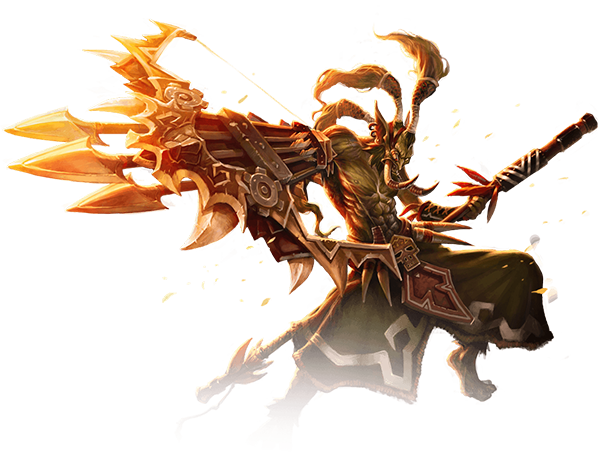
Example: Layer-based AI
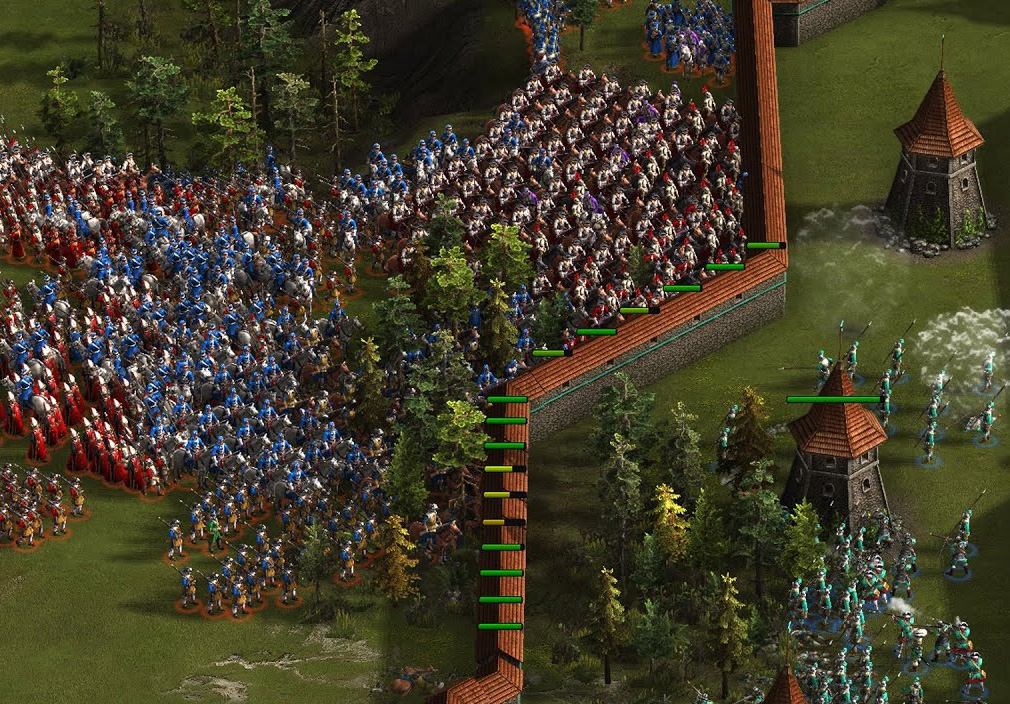
Example: Megaglest
- Open-source 3D RTS (LINK)
- seven factions: tech, magic, egypt, indians, norsemen, persian, romans
- rule-based AI
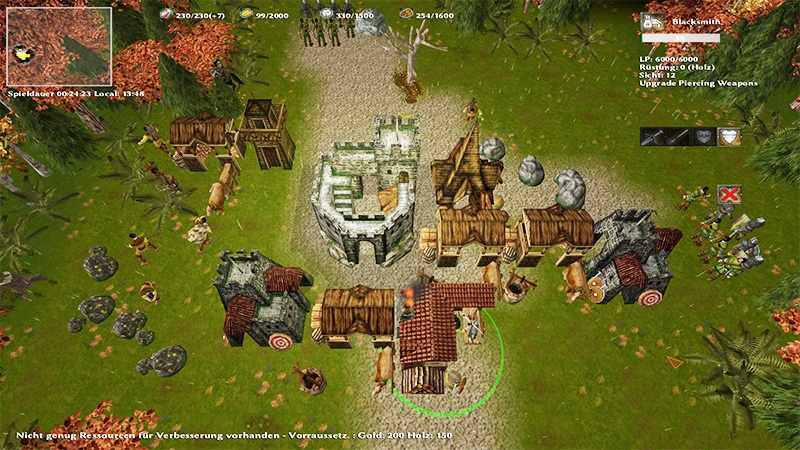
Megaglest architecture
Megaglest rules
| Rule | Condition | Command | Freq [ms] |
|---|---|---|---|
| AiRuleWorkerHarvest | Worker stopped | Order worker to harvest | 2 000 |
| AiRuleRefreshHarvester | Worker reassigned | 20 000 | |
| AiRuleScoutPatrol | Base is stable | Send scout patrol | 10 000 |
| AiRuleRepair | Building Damaged | Repair | 10 000 |
| AiRuleReturnBase | Stopped unit | Order return to base | 5 000 |
| AiRuleMassiveAttack | Enough soldiers | Order massive attack | 1 000 |
| AiRuleAddTasks | Tasks empty | Add tasks | 5 000 |
| AiRuleBuildOneFarm | Not enough farms | Build farm | 10 000 |
| AiRuleResourceProducer | Not enough resources | Build resource producer | 5 000 |
| AiRuleProduce | Performing prod. task | 2 000 | |
| AiRuleBuild | Performing build task | 2 000 | |
| AiRuleUpgrade | Performing upg. task | 30 000 | |
| AiRuleUnBlock | Blocked units | Move surrounding units | 3 000 |
Lecture Summary
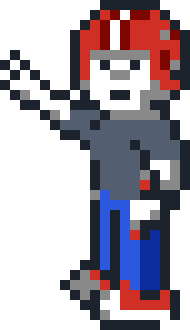
- I know what challenges in terms of game AI the developers face
- I know basic AI techniques, such as scripting, FSM, and HFSM
- I know something about behavior trees
- I know the definition of supervised, unsupervised, and reinforcement learning
- I know the main element and features of RTS
